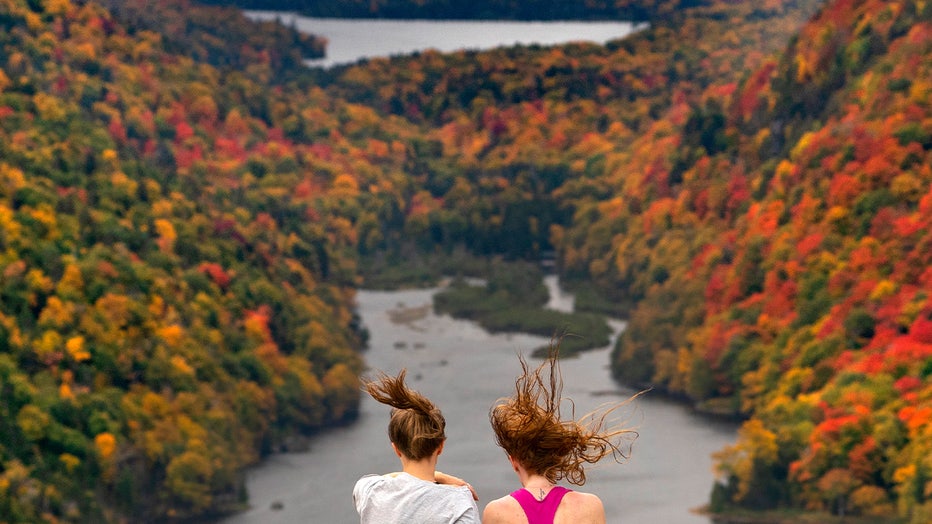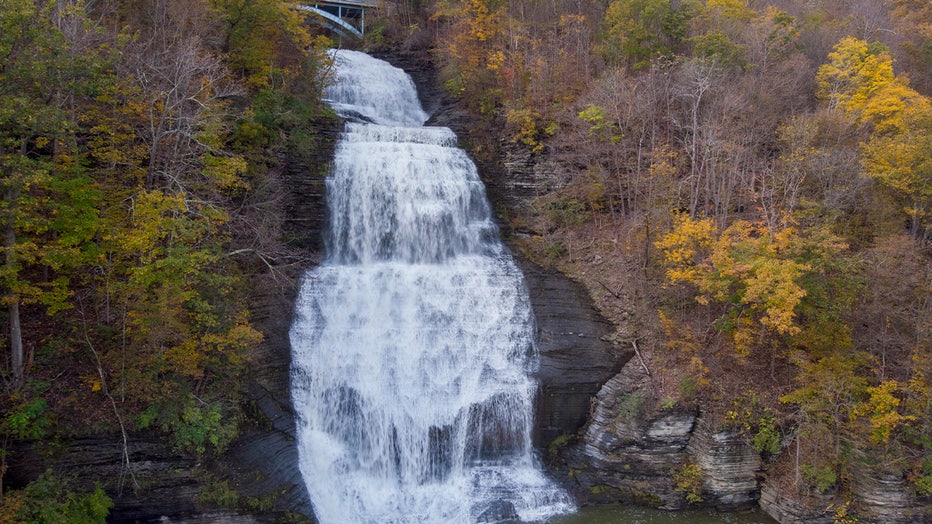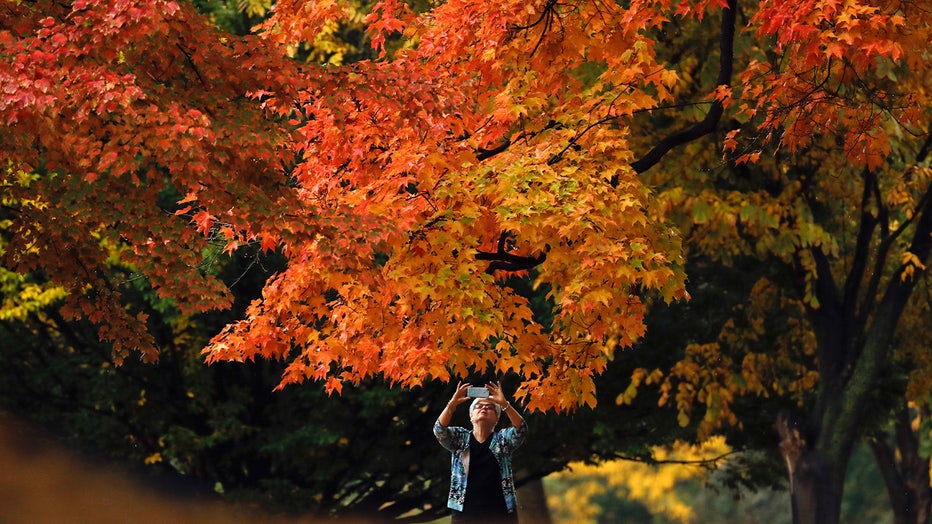When does fall start? What will it look like in NY?

When will NYC see peak fall colors?
Fall temperatures are almost upon us, but when is it actually going to look like fall? FOX 5 NY Meteorologist Audrey Puente breaks down the science behind the season.
NEW YORK - The 2024 fall foliage season has begun in New York State, marking the first sightings of vibrant seasonal colors in various Upstate regions.
The Adirondacks, Catskills, Thousand Island-Seaway, Capital-Saratoga, Central New York, Finger Lakes, and Greater Niagara regions are beginning to show early signs of fall colors.
In the rest of the state, foliage change remains at 5% or less, according to the iloveny.com's Fall Foliage Report.
What is fall foliage?
While the color of leaves depends on the chlorophyll, weather extremes can play a significant role in how magnificent the sights are during autumn.
Chlorophyll is a pigment that helps give leaves their color. The chemical compound helps the trees create their own food through photosynthesis, which converts sunlight into chemical energy.
The lack of chlorophyll can help reveal the sought-after yellow, orange and red colors, which are usually bountiful during rainier periods.
When will leaves begin to change in New York?
The highlight of the fall in New York is when the leaves begin to change, casting the Empire State in a beautiful spectrum of orange, yellows and reds across its trees and forests.
According to ExploreFall.com's 2024 Fall Foliage Map, by September 18, almost all of upstate New York will have at least some color in their trees.

Wind whips the hair of two visitors taking in the view at the Indian Head vista overlooking Lower Ausable Lake in the Adirondacks, Sunday, Sept. 27, 2020, near Keene Valley, N.Y. According to the state's fall foliage report, colors in many parts of t
By October 1, almost all the trees in the state will have begun to change, along with throughout most of Connecticut and all but small parts of southern New Jersey. Parts of the North Country, Mohawk Valley and Capital Region will already be seeing moderate or high color changes to their leaves.
By mid-October, most of New York will be in peak color.
Why do leaves change color?
While scientists don't fully understand all the details of how leaves change color, they know the basic factors that influence autumn leaf color.
- Leaf pigments
- Length of night
- Weather
"The timing of color changes and the onset of falling leaves is primarily regulated by the calendar as nights become longer. None of the other environmental influences – such as temperature, rainfall, food supply – are as unvarying as the steadily increasing length of night during autumn," the U.S. Forest Service says. "As days grow shorter, and nights grow longer and cooler, biochemical processes in the leaf begin to paint the landscape with Nature's autumn palette."
So if you've been waiting for Pumpkin Spice season to begin and getting your apple-picking outfits ready, don't worry, you don't have too much longer to wait.
Here's what you need to know about the first day of fall!
When is the first day of fall?
According to the NOAA, the autumnal equinox will happen on September 22 at 8:43 a.m. this year.
RELATED: Pumpkin Spice Latte returns tomorrow! A look at Starbucks 2024 fall menu
Meteorological fall, which is based on the annual temperature cycle, is set to begin on September 1.
What is the Autumnal Equinox?
The autumnal equinox is the moment when the sun crosses the equator, meaning those of us living in earth's Northern Hemisphere will begin seeing more darkness than light.
The equinox is when the Earth's axis is tilted neither toward nor away from the sun. There are only two equinoxes each year, the vernal & autumnal.

Fall foliage is seen at Shequaga Falls in the village of Montour Falls, New York, on Monday, November 1, 2021. (AP Photo/Ted Shaffrey)
The "nearly" equal hours of day and night are due to refraction of sunlight or a bending of the light's rays that causes the sun to appear above the horizon when the actual position of the sun is below the horizon. Additionally, the days become a little longer at the higher latitudes (those at a distance from the equator) because it takes the sun longer to rise and set.
The autumnal equinox marks the beginning of astronomical fall, so it has no relation to temperatures, unlike meteorological fall.
What is there to do in New York this fall?
Autumn is one of the best times to explore New York State.
iloveny.com has a full collection of ways to enjoy the Empire State while experiencing autumn's vibrant colors first hand.

Margaret Gould of Whittier, Calif., photographs the fall foliage in Washington Park on Thursday, Oct. 20, 2016, in Albany, N.Y. (AP Photo/Mike Groll)
From nature hikes to pumpkin picking, corn mazes, visiting craft cideries and breweries, and enough opportunities for fantastic photography to fill any Instagram feed, fall in New York is one of the best times of the year.
When does winter begin?
The first day of winter in the Northern Hemisphere starts with the winter solstice, which takes place this year on December 21 at 4:20 a.m.
The winter solstice is the shortest day and longest night of the year. In the Northern Hemisphere, it happens when the sun is directly over the Tropic of Capricorn.

